How to Open a Corrupt File on Mac
You may be wondering what the "Other" storage category is on your Mac and why it's taking up precious storage space. Though it may be frustrating to see this unexplained category in your Mac's storage category, most of the time, it's useful in some way or another.
It's worth noting that these files aren't normally harmful or wasteful to your computer's system; most are intended to help your Mac run efficiently, and ideally, you shouldn't ever have to clear out your Other files. Unfortunately, they can quickly clog up a computer low on storage — especially if you're storing a large number of iPhone or iPad backups.
Whether you're looking to free up space on your hard drive or just want to do some spring cleaning, here are some simple steps to get your Mac free and clear.
A note on what happened to 'Other' space in macOS Sierra and higher
When Apple added its storage management feature to macOS Sierra and newer, called Optimize Storage, it reorganized what "other" storage is and where it's located on the Mac. Much of it has been divided out through other categories so it's easier to find and remove.
The 100GB of Other storage I used to carry on my iMac is whittled down to just 5GB. You can still clean out old and unnecessary content from your Mac by using Optimized Storage, even if your "Other" category storage use isn't all that big.
How to use Optimized Storage on Mac
A lot of the features of Optimized Storage remove content from your Mac and store them in iCloud. If you're concerned with how much storage you're using up in iCloud, you can customize or disable some Optimized Storage features to keep a balance between what's on your Mac and what's in iCloud.
How to customize or disable Optimized Storage on Mac
What's this 'Purgeable' category all about?
If you check your system storage graph in macOS, you'll probably discover a category called Purgeable. This is part of Apple's Optimized Storage service. When you move your Documents into iCloud (part of the Store in iCloud component) and your hard drive gets low on storage, only recently opened files are kept on your Mac. Older documents are stored in iCloud, while a shortcut icon is kept on your Mac (files are automatically re-downloaded to your Mac as soon as you open them). The Purgeable files are what Optimized Storage will move to iCloud and delete from your hard drive only if your hard drive starts to get full. Purgeable files also include caches and temporary files that used to fit into the Other category, which will also be deleted as your hard drive starts to fill up.
Though your Other storage might have been spread out across categories in macOS Sierra and higher, you can still follow the below steps to manually clean up your Mac and get rid of unnecessary files.
How to check your storage space on your Mac
If you are concerned with how much storage space you have remaining on your Mac computer, you can check its usage folder to see how much space each category is taking up, including Other.
- Click on your desktop or the Finder icon from the Dock.
- Select the Apple Menu icon in the upper left corner of the screen.
-
Click on About This Mac.
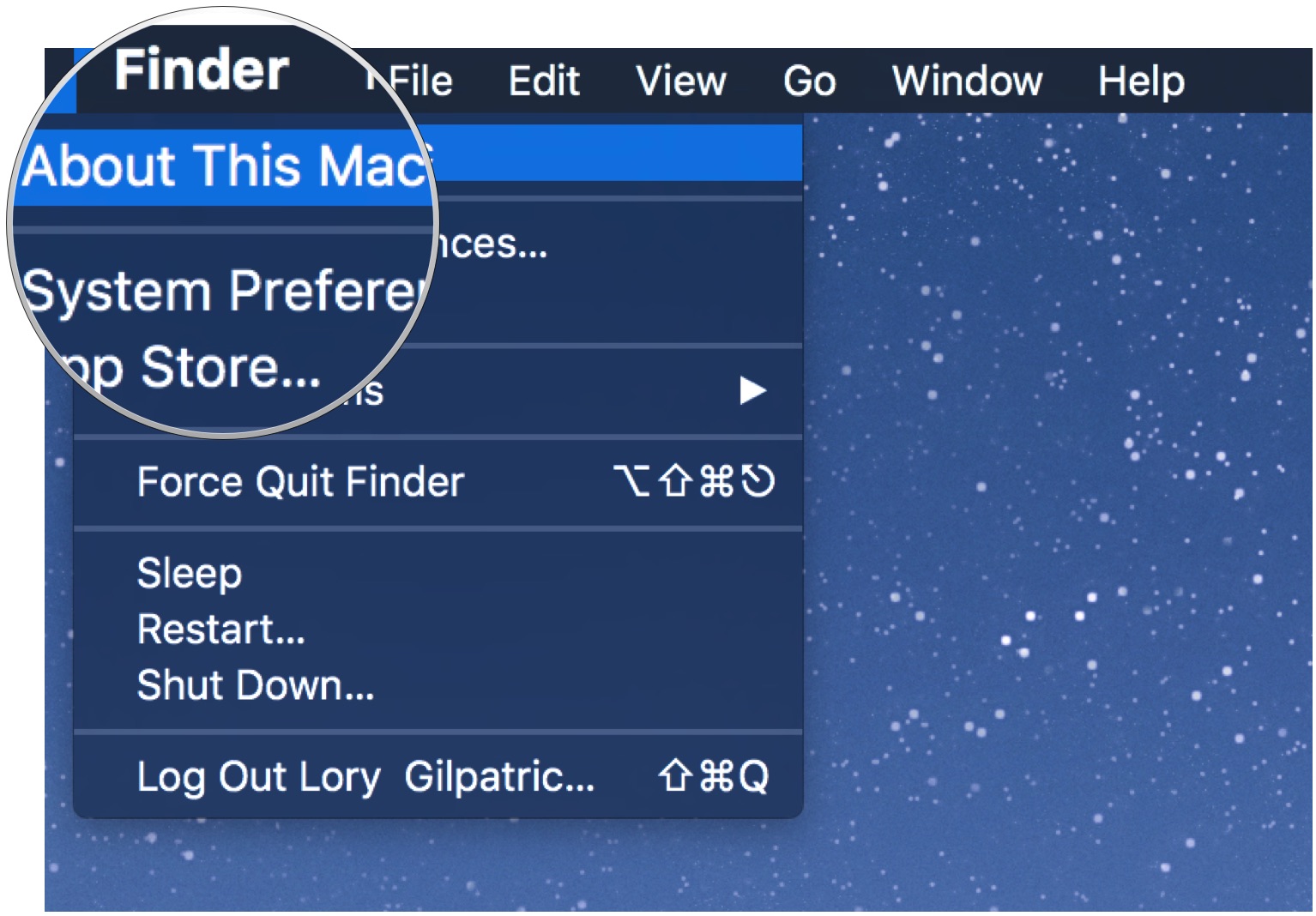 Source: iMore
Source: iMore -
Select Storage.
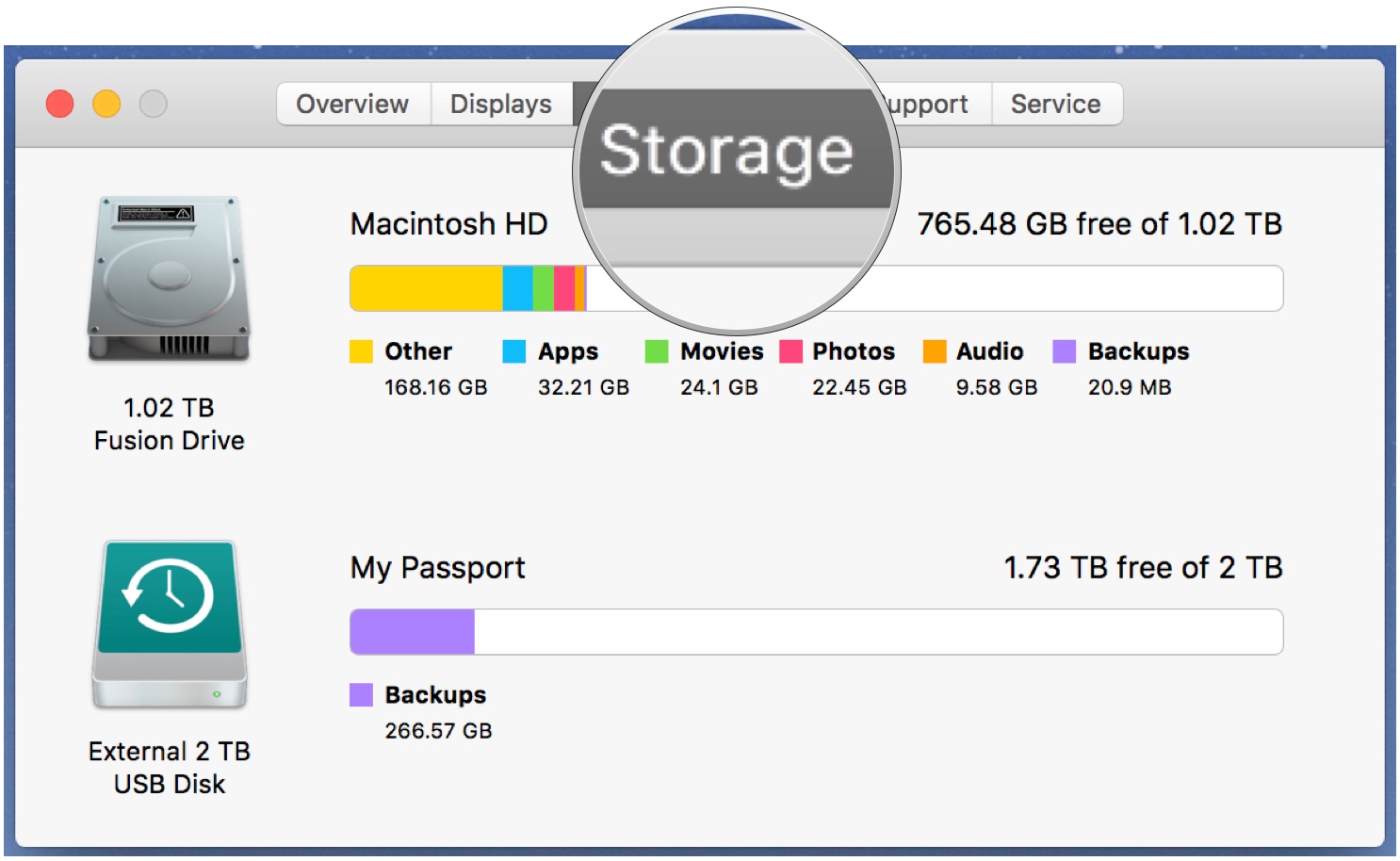 Source: iMore
Source: iMore
Your Mac breaks down its storage categories as follows: Apps, Movies, Photos, Audio, Backups, and — that annoying, undescriptive category — Other.
How to remove cached files
Now that you know how much space your Other files are taking up, it's time to reduce their footprint on your Mac. You can start by removing items you don't need, including caches for your web browser, saved Apple Music streams, and photo previews.
A note on deleting cache folders: You only want to delete old and unnecessary files, as current cache files store your preferences. We strongly recommend only deleting cache files from old apps.
- Click on your desktop or select the Finder icon from the Dock.
- Select the Go menu in the upper left corner of the screen.
-
Click on Go to Folder.
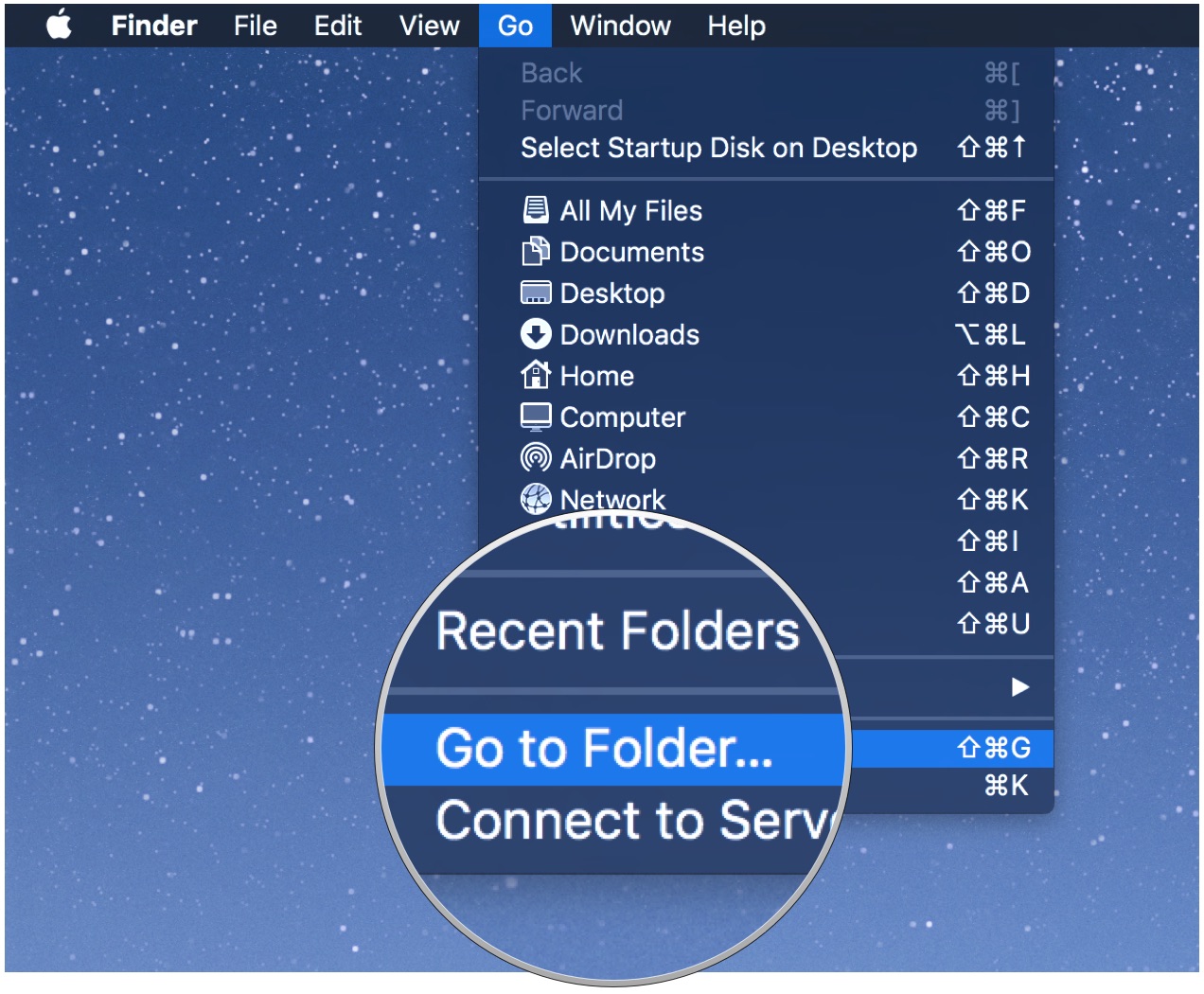 Source: iMore
Source: iMore -
Type ~/Library/caches into the text box. A list of caches from active apps will appear on your desktop.
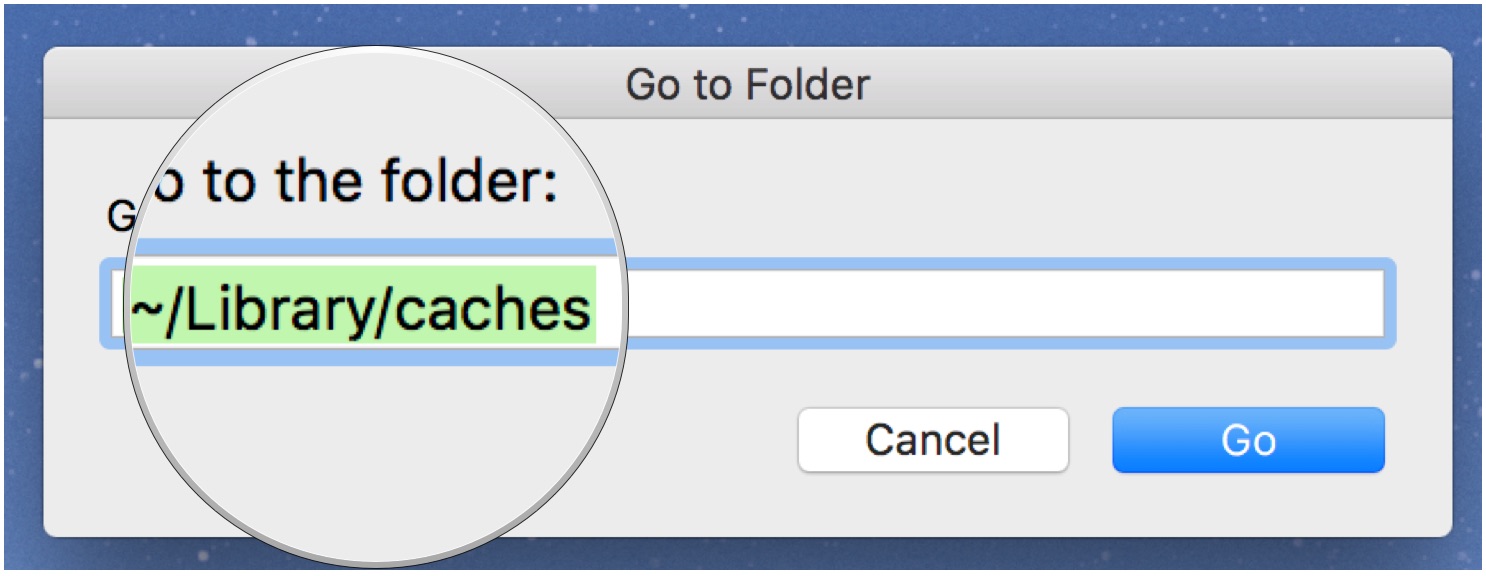 Source: iMore
Source: iMore - Select the app folder you wish to remove the cache from.
- Right-click (or control-click) on the app folder.
-
Select Move to Trash.
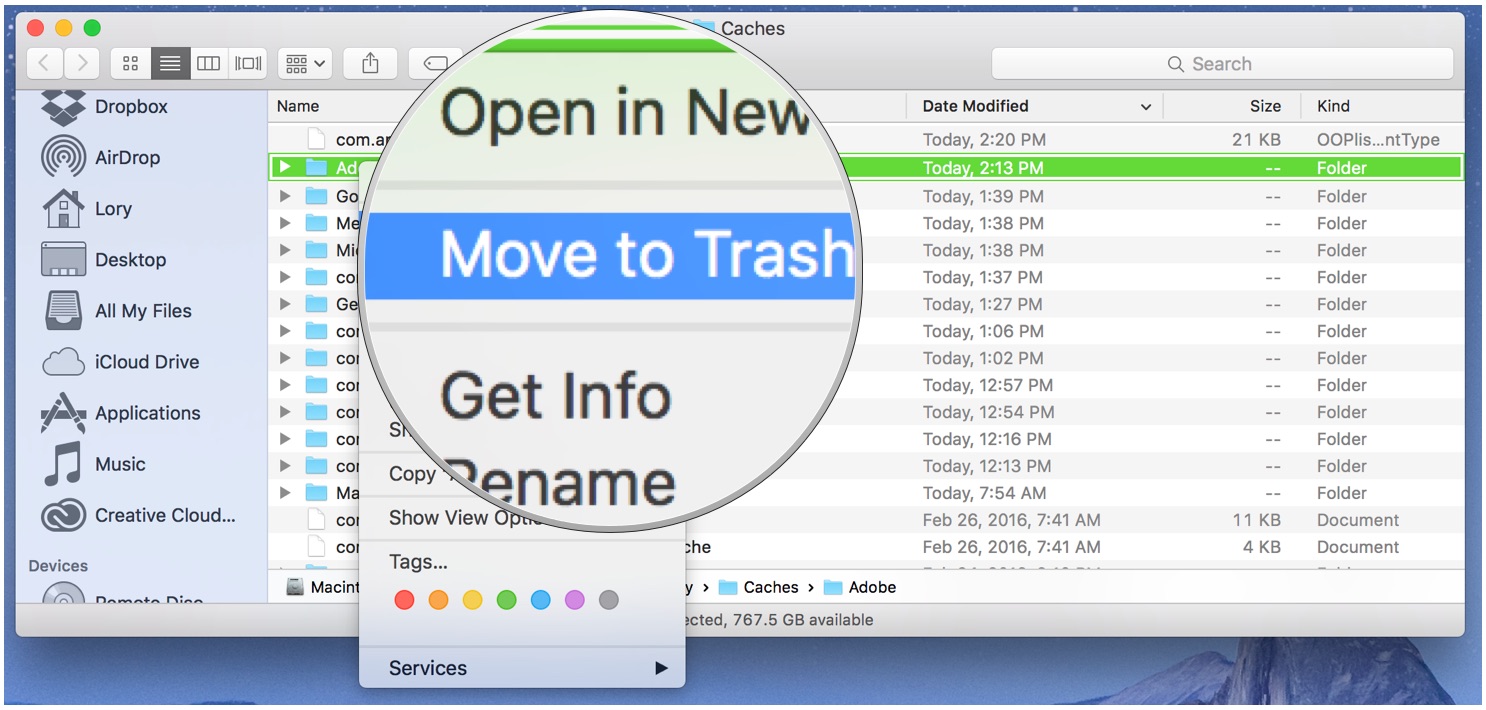 Source: iMore
Source: iMore
How to remove downloaded files
Chances are, your Downloads folder is stuffed with Other-type files, including installer packages, documents, and folders you have already made copies of somewhere else. If you want to make some room on your Mac, it may be time to clean out your Downloads folder.
- Click on your desktop or select the Finder icon from the Dock.
- Select the Go menu in the upper left corner of the screen.
-
Click on Downloads.
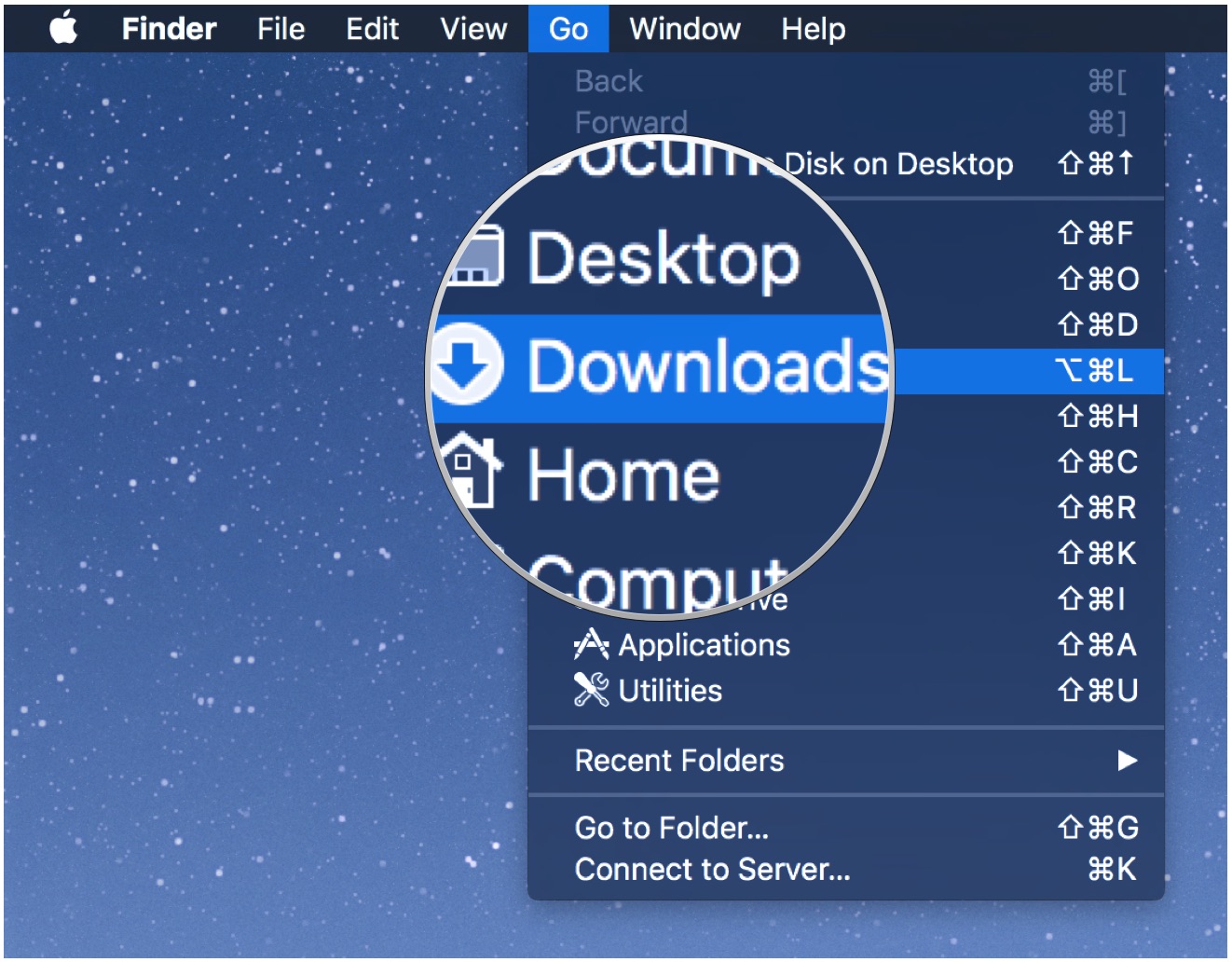 Source: iMore
Source: iMore - Select the file you wish to remove.
- Right-click (or control-click) on the file.
-
Select Move to Trash.
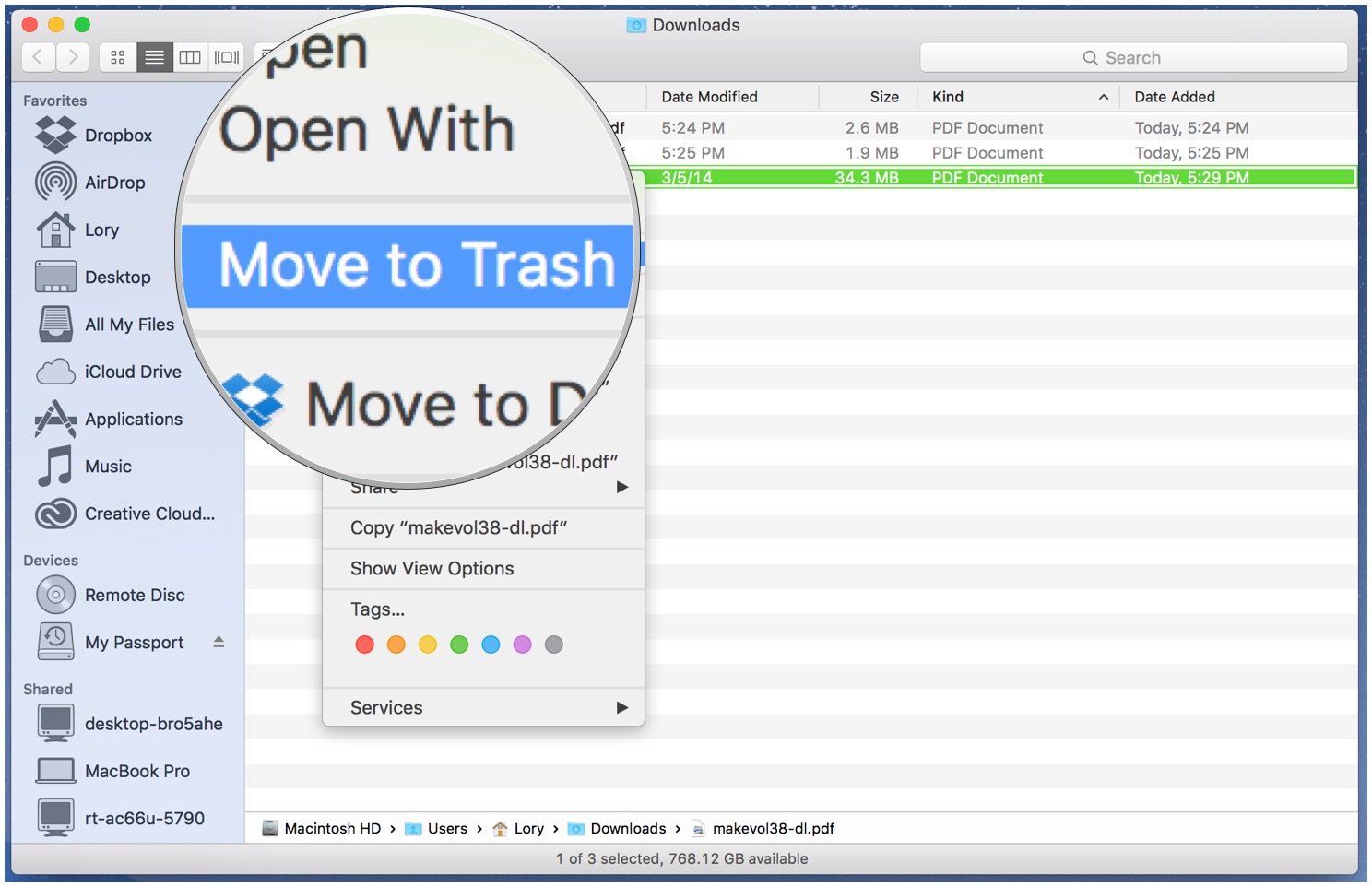 Source: iMore
Source: iMore
If you want to save a file from the Downloads folder but don't want it clogging your drive, consider moving it to an external hard drive or flash drive, or uploading it to an online storage option like Dropbox.
How to delete old device backups in iTunes
If you tend to get new iOS devices fairly regularly, you may have unnecessary device backups stored on your computer via iTunes. Backups take up 4-5GB each, on average; there's no need to hold on to older device backups if you no longer have the device or have it stored in iCloud.
How to delete an iPhone or iPad backup from iTunes
Third-party software that can help
While you don't need any third-party app to "clean" your Mac, there are some very handy system access tools out there that make it easier to regularly remove unwanted files.
CleanMyMac 3
With CleanMyMac, you have easy access to a list of features that help you keep your Mac free of unnecessary junk. It scans your entire system and recommends files you should delete based on how old they are and whether they are considered unnecessary to your workflow. It's a lot like Apple's Optimized Storage, but with a few additional features. My favorite is the recommendation to delete all content related to an application. Sometimes, you'll end up with a couple of files left behind by an app when you delete it. CleanMyMac provides a one-button purge of everything associated with that app.
$39.99 - Download Now
DaisyDisk
DaisyDisk scans your Mac and gives you a pie chart that makes it easy to see what files are using up the most space. You can identify files that are in the Other storage category and drag them to the delete box.
$9.99 - Download Now
Onyx
Onyx is a robust Mac system access tool that, in-part, can delete caches, logs, temporary items, and other files that find their way into the Other storage category.
Free - Download Now
Cocktail
Cocktail is another useful system access tool that you can use to clear caches, purge memory, and manage hidden Apple app settings, which might be automatically sending files into the Other category abyss.
$19 - Download Now
Questions?
Still having trouble with Other? Let us know in the comments.
We may earn a commission for purchases using our links. Learn more.
How to Open a Corrupt File on Mac
Source: https://www.imore.com/how-find-and-remove-files-other-category-mac






